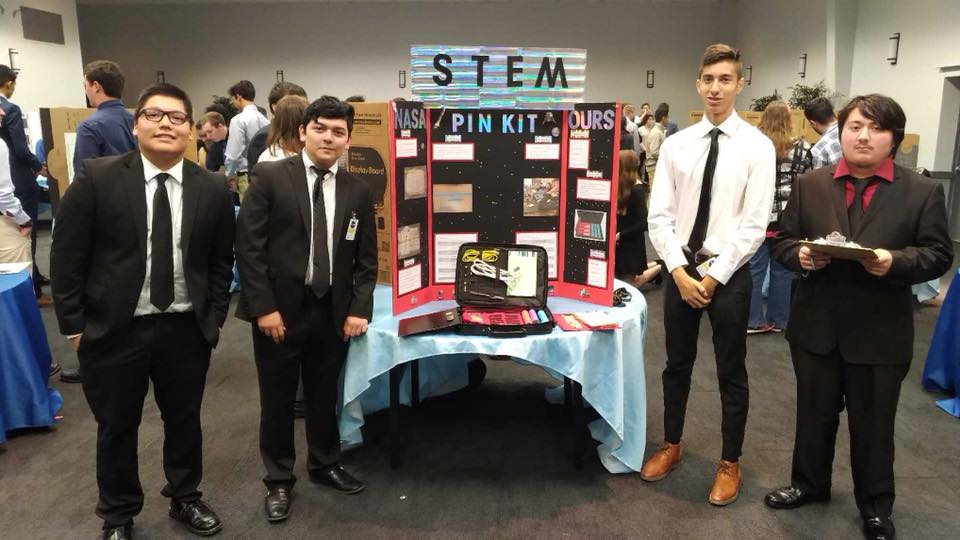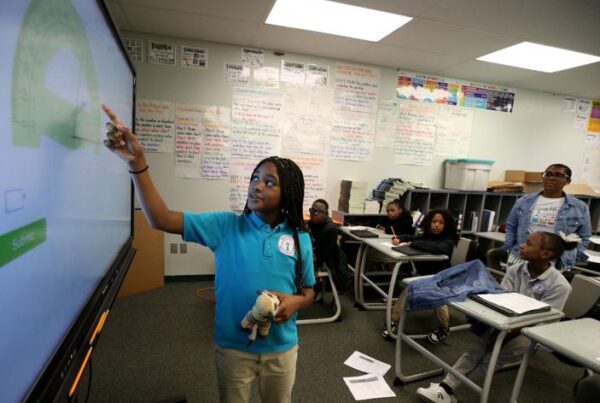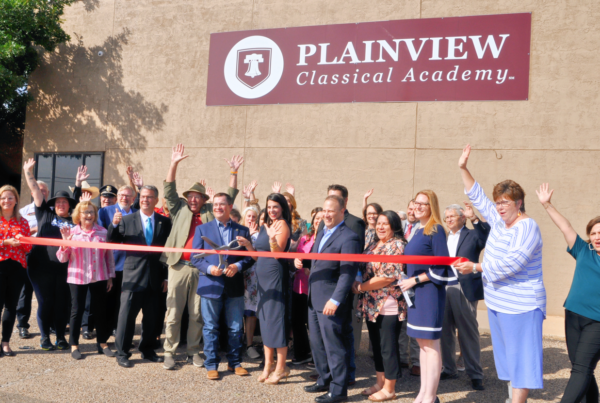Imagine being in high school and having the opportunity to create and present designs and prototypes to the National Aeronautics and Space Administration (NASA) that could potentially be used on the International Space Station. One group of seniors at STEM Academy of Lewisville are doing just that with their capstone project and are moving on to the final round in the HUNCH Design and Prototype Project competition.
The purpose of the Design and Prototyping HUNCH Program is to allow students the opportunity to develop innovative solutions to problems astronauts face while living on the International Space Station. Project ideas can come from the astronauts themselves or from flight crew systems and operational groups at NASA that need more idea development. Students then partner with NASA Research Centers to develop solutions that are designed to function in the zero-gravity, recycled-air environment the astronauts live in.
Each year, NASA HUNCH sends out the list of projects and requirements in September and students get to work. STEM Academy of Lewisville seniors split into four groups of 3-4 by expertise. The first design review happens in October, with the critical design review in February. Following the critical review, judges decide on a list of contenders that will be invited to the Johnson Space Station in Houston, Texas on April 25.
“The final review is like a big science fair, except instead of parents and teachers, the students are being interviewed and judged by astronauts and engineers,” said Michael Hayes, STEM Academy teacher.
More than 300 projects, by more than 1,700 students, from across the country were reviewed and about 30 teams, including three of the four STEM Academy teams were selected for the Contender List. “The Contender List includes student projects that showed good ideas, merit, quality research and testing that exhibit the kind of ideas NASA HUNCH is looking for to solve this year’s engineering problems,” said Glenn Johnson, HUNCH Design Engineer.
NASA may choose to utilize a winning design and work with the team to develop a final product that will be used on a future mission.
The three National Contenders from the STEM Academy projects are:

Students work on their augmented reality project design.
Augmented Reality – software, image processing/recognition system to help international astronauts correctly identify parts, tools and supplies on the space station
(One of three winners)
- Cassandra Ramos
- Logan Girvan
- Alexia Barwick
- Jamyn Vincent
- Ian Hobratschk
- Cal Nelson

Students work on their design for the pin kit prototype.
Pin Kit – improved hardware organization system for making supplies more easily accessible in micro-gravity
(One of four winners)
- Osiel Guiterrez
- Tyrell Jones
- Juan Quintanilla
- Brandon Obregon
Can Squisher -method to enable recycling by crushing food cans in zero gravity

Students develop their can squisher design.
- Justin Ochoa
- Philip Smith
- Maya Prince
- Isaiah Kim
“Our teams have made it to the next level and are competing against the best STEM high schools in the nation,” said Hayes. “To predict where we’ll land in the competition is difficult, but after seeing the other schools we’re optimistic and confident in the quality of our projects.”
For a full list of 2018 contenders, click here.
For a list of the 2018 winners invited to present their designs and prototypes at the Johnson Space Center, click here.
![]()




